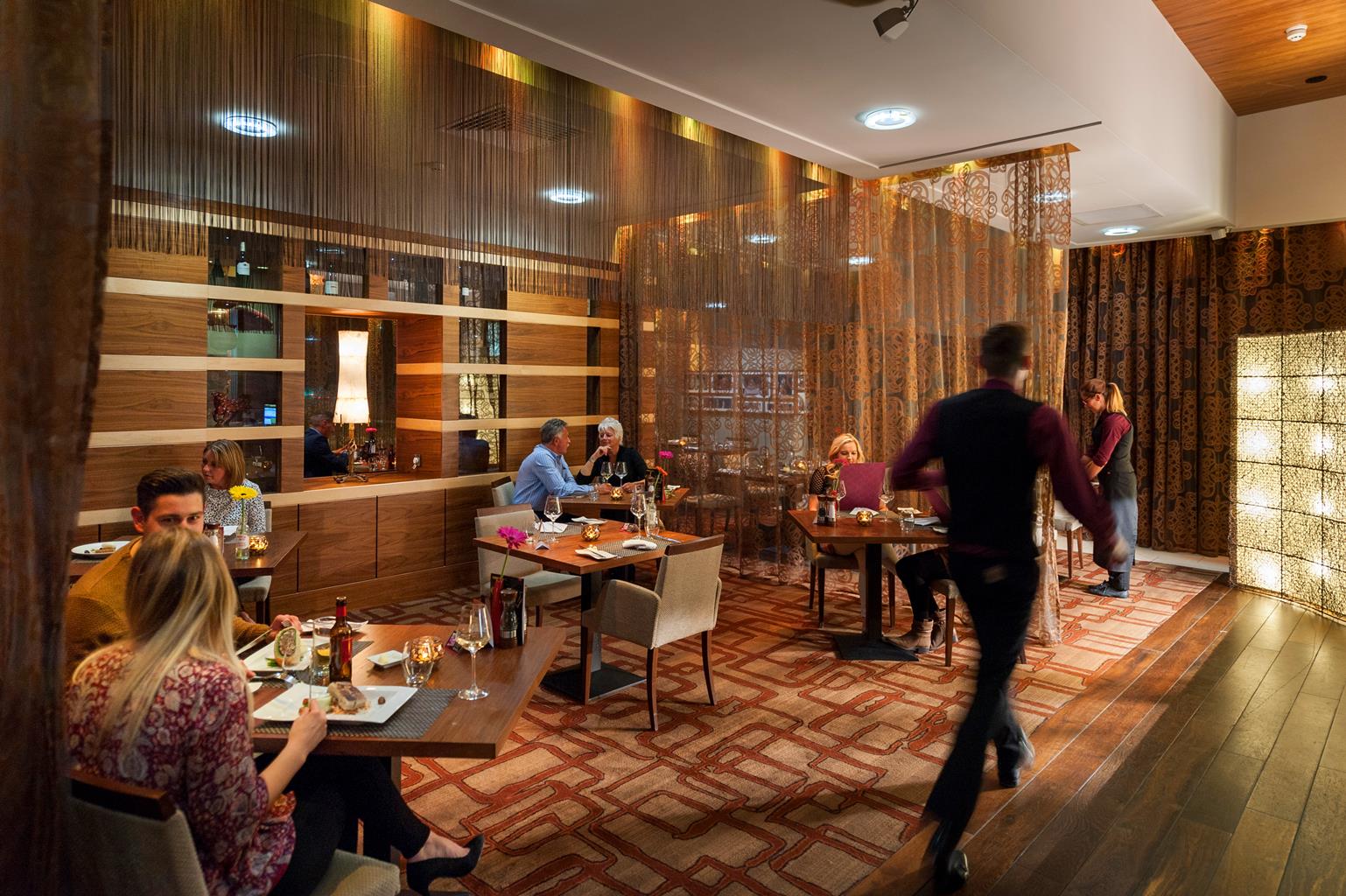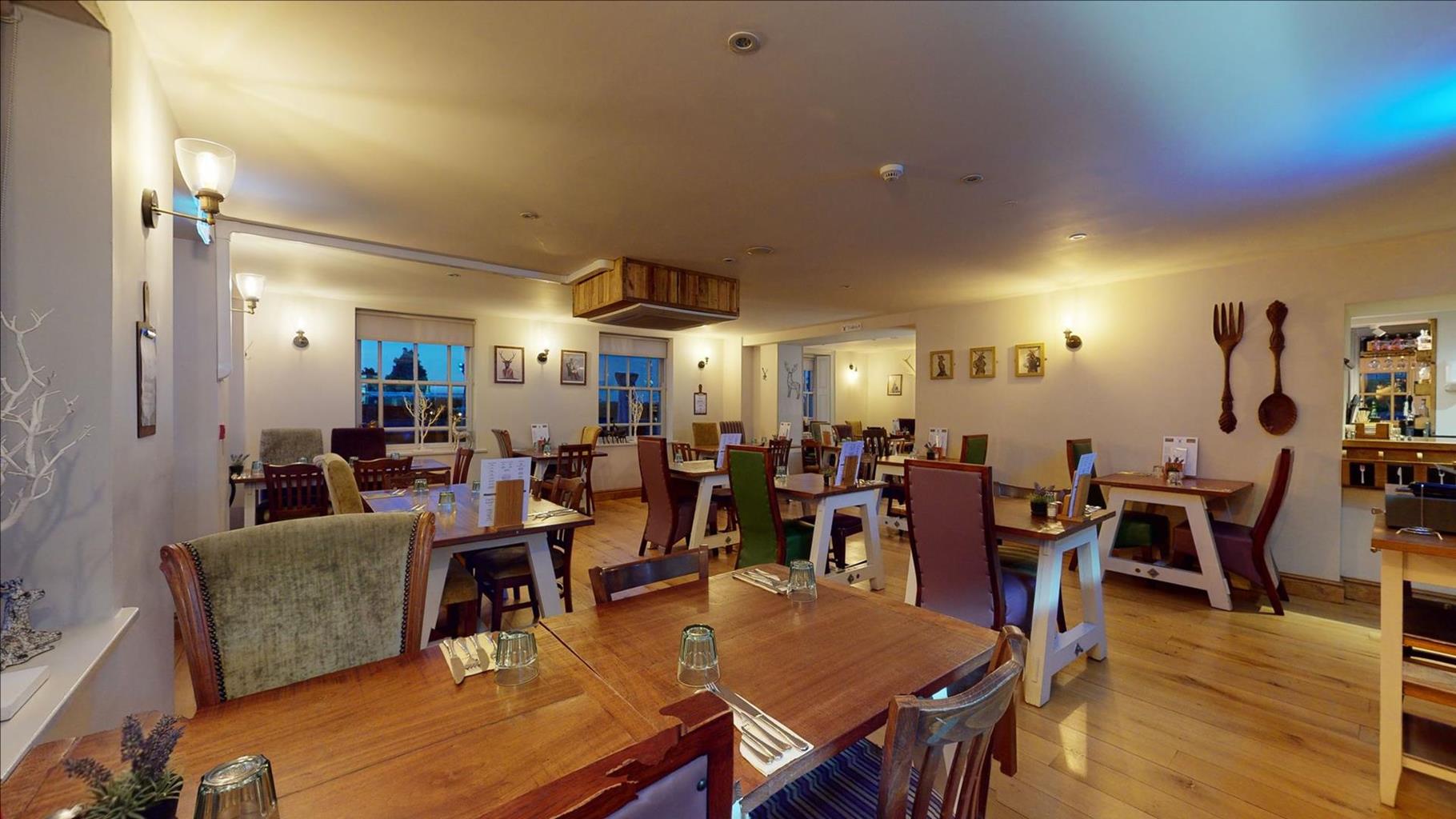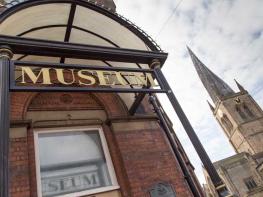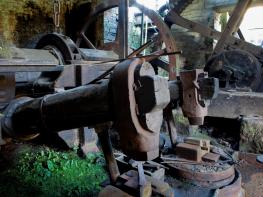Casa Hotel has a contemporary Spanish theme throughout. The stylish bedrooms feature air…
Old Whittington

7 miles (11.3kms)
About the walk
In 1688 a small ale house in Old Whittington, a village just north of Chesterfield, played host to three men plotting revolution. The Earls of Danby and Devonshire, together with John D’Arcy, eldest son of the Earl of Holderness, got together on Whittington Moor for a clandestine meeting. They were on horseback and disguised as a hunting party, but as heavy rain came down they took refuge in the Cock and Pynot (pynot is an old Derbyshire name for a magpie) at Old Whittington. In a quiet corner of the bar they discussed their role in the emerging plan to overthrow the Catholic King James II and replace him with the Protestant William of Orange.
Revolution House
The building is no longer an ale house, but has been well preserved both outside (as one of the relatively few thatched buildings left in the county) and inside, where on seasonal weekends you can admire the 17th-century furniture and learn more about the Glorious Revolution of 1688, as well as other aspects of local history. Revolution House is open 29 March–29 September, 11am–4pm on weekends and bank holidays. Throughout the summer it hosts special events and exhibitions based on an historical and cultural theme.
Whittingon’s Glass-making Industry
The walk leaves Old Whittington to climb gently rising farmland, which is mostly arable around here. There are great views southwards of Chesterfield, with the town laid out around the crooked spire of St Mary’s. To the west the Peak District moors start to rise. Old and New Whittington are nowadays more like suburbs of Chesterfield than distinct villages, although away from these centres it still feels quite rural. Mind you, this area was once one of the leading glass-making centres in the country, as born out by local names Glasshouse Common and Glasshouse Farm. It was here, in the early 1700s, that Richard Dixon established a glasshouse and furnace, taking advantage of local coal and ironstone. Towards the end of the century the Chesterfield Canal opened and a special narrow-gauge railway was constructed to connect the works with the canal, taking the likes of ironstone out and bringing in the all-important raw material of sand. Your walking route traces the route of this railway, up Stone Lane and Glasshouse Lane from New Whittington.
Dixon’s glasshouse produced all manner of glass products, including rudimentary bottles and everyday items through to quality cut-glass for the upper end of the market. However, by the 1820s, production ceased and the business finished for good. Hardly anything remains of Whittington’s glass-making industry today, except for a few place-names that include Dixon’s Lock on the Chesterfield Canal.
Walk directions
From Revolution House go left and left again for a public footpath by Chapel Cottage. Follow the alleyway across the end of a drive and around the church and graveyard to reach a path junction among trees. Keep left, go down steps, and out along the right edge of several rising fields. Go diagonally left in the last to climb up to a strip of woods. Cross the stile and continue ahead on the wide path through to the far side the woods.
Go ahead on the path across a field, then on through scrub and woodland. Walk straight across the drive of a house for a narrow hedge gap, then across a field to the road. Go left and after 100yds (91m) left again for a bridleway along the southern side of Stubbing Wood.
At a wide green barrier at the corner of the woods go right on a narrow path along the inside top edge of the trees, ignoring paths into the middle. Keep left at a junction and stay close to the top edge of the woods all the way. At a path junction in the far corner ignore the left turn uphill and go straight ahead, then diagonally right out across a field to a road.
Cross over and go diagonally left up a field, then right along a lane past the thatched Ash Lane Farm. At the junction go straight ahead for a field path. At the road at the end turn right for Middle Handley, then right again before the first house.
Follow the path across one field, then down the left side of the next, ignoring the tempting right fork across the middle. Just before a telegraph pole turn left for a clear path across wide dipping fields. In the final one keep to the left side to reach the road. Cross carefully to walk down Staveley Lane opposite, branching off at the left bend for the lane past Dale Farm straight ahead.
The lane becomes a grassy bridleway. Follow it all the way downhill and past Parkhouse Farm to the road. Cross this to the pavement opposite and turn right to walk into New Whittington for 600yds (549m). Turn right up Stone Lane.
At the top cross over the main road for Glasshouse Lane opposite and walk up it all the way to the top. It becomes unsurfaced and beyond a stile turn left for a field-edge track up to the woods. Keep the wall on your left and continue until you reach a crossroad of paths. Turn left through the woods to return to the start on the outward route.
Additional information
Field paths and lanes, 11 stiles
Rolling arable fields
Off lead on green lanes and in woodland
OS Explorer 269 Chesterfield & Alfreton
Street parking in Old Whittington
Old Whittington
WALKING IN SAFETY
Read our tips to look after yourself and the environment when following this walk.
Find out more
Also in the area
About the area
Discover Derbyshire
The natural features of this central English county range from the modest heights of the Peak District National Park, where Kinder Scout stands at 2,088 ft (636 m), to the depths of its remarkable underground caverns, floodlit to reveal exquisite Blue John stone. Walkers and cyclists will enjoy the High Peak Trail which extends from the Derwent Valley to the limestone plateau near Buxton, and for many, the spectacular scenery is what draws them to the area.
The county is well endowed with stately homes – most notably Chatsworth, the palatial home of the Duke and Duchess of Devonshire, with its outstanding collections of paintings, statuary and art. Other gems include the well preserved medieval Haddon Hall, the Elizabethan Hardwick Hall, and Kedleston Hall, whose entrance front has been described as the grandest Palladian façade in Britain.
The spa town of Matlock is the county’s administrative centre and other major towns of interest include Derby and the old coal mining town of Chesterfield, with its crooked spire. Around the villages of Derbyshire, look out for the ancient tradition of well dressing, the decorating of springs and wells – the precious sources of life-sustaining water – with pictures formed from flowers.
Nearby stays
Restaurants and Pubs
Nearby experiences
Recommended things to do
Why choose Rated Trips?
Your trusted guide to rated places across the UK
The best coverage
Discover more than 15,000 professionally rated places to stay, eat and visit from across the UK and Ireland.
Quality assured
Choose a place to stay safe in the knowledge that it has been expertly assessed by trained assessors.
Plan your next trip
Search by location or the type of place you're visiting to find your next ideal holiday experience.
Travel inspiration
Read our articles, city guides and recommended things to do for inspiration. We're here to help you explore the UK.













